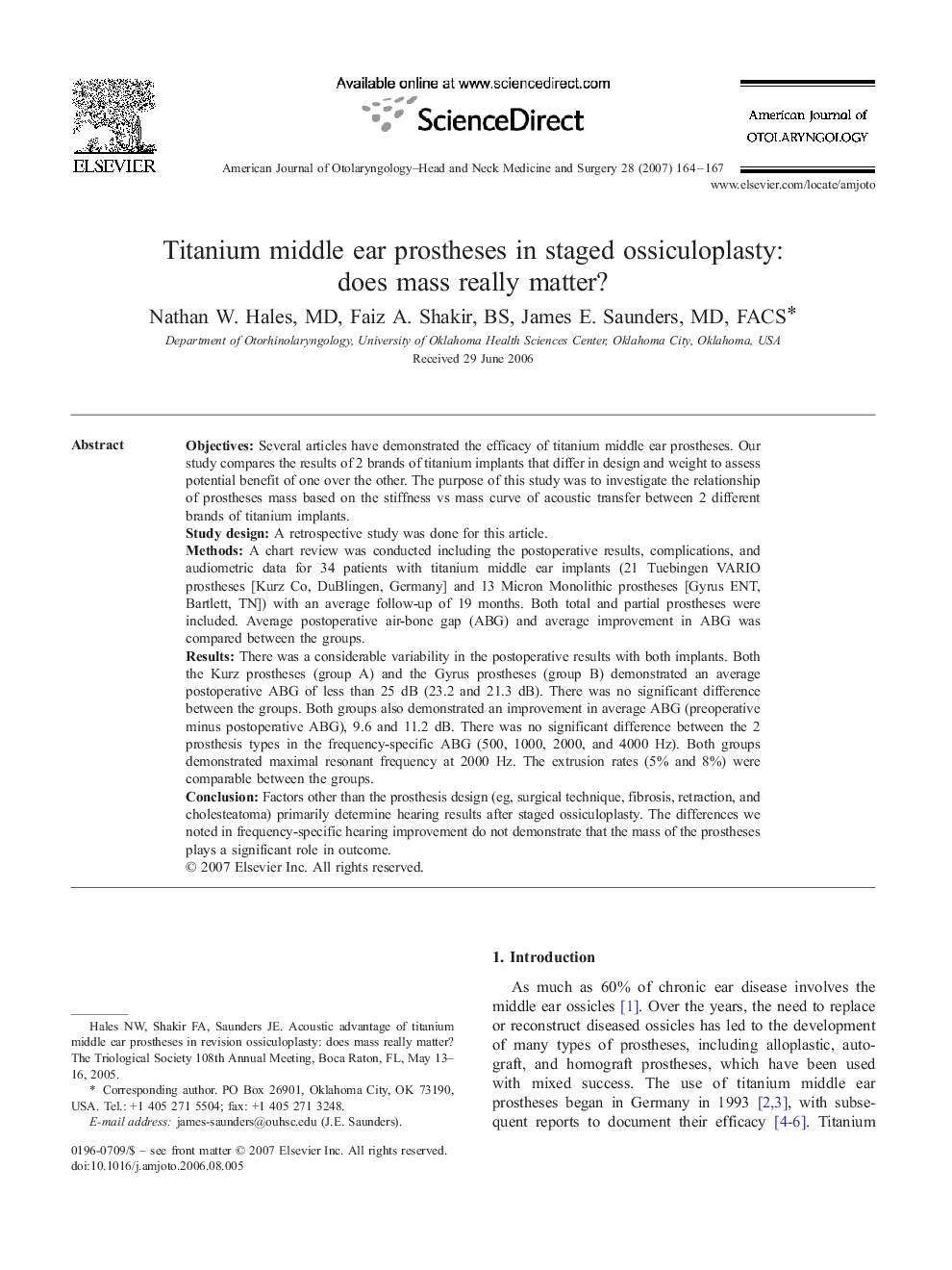| Article ID | Journal | Published Year | Pages | File Type |
|---|---|---|---|---|
| 4104563 | American Journal of Otolaryngology | 2007 | 4 Pages |
ObjectivesSeveral articles have demonstrated the efficacy of titanium middle ear prostheses. Our study compares the results of 2 brands of titanium implants that differ in design and weight to assess potential benefit of one over the other. The purpose of this study was to investigate the relationship of prostheses mass based on the stiffness vs mass curve of acoustic transfer between 2 different brands of titanium implants.Study designA retrospective study was done for this article.MethodsA chart review was conducted including the postoperative results, complications, and audiometric data for 34 patients with titanium middle ear implants (21 Tuebingen VARIO prostheses [Kurz Co, DuBlingen, Germany] and 13 Micron Monolithic prostheses [Gyrus ENT, Bartlett, TN]) with an average follow-up of 19 months. Both total and partial prostheses were included. Average postoperative air-bone gap (ABG) and average improvement in ABG was compared between the groups.ResultsThere was a considerable variability in the postoperative results with both implants. Both the Kurz prostheses (group A) and the Gyrus prostheses (group B) demonstrated an average postoperative ABG of less than 25 dB (23.2 and 21.3 dB). There was no significant difference between the groups. Both groups also demonstrated an improvement in average ABG (preoperative minus postoperative ABG), 9.6 and 11.2 dB. There was no significant difference between the 2 prosthesis types in the frequency-specific ABG (500, 1000, 2000, and 4000 Hz). Both groups demonstrated maximal resonant frequency at 2000 Hz. The extrusion rates (5% and 8%) were comparable between the groups.ConclusionFactors other than the prosthesis design (eg, surgical technique, fibrosis, retraction, and cholesteatoma) primarily determine hearing results after staged ossiculoplasty. The differences we noted in frequency-specific hearing improvement do not demonstrate that the mass of the prostheses plays a significant role in outcome.
